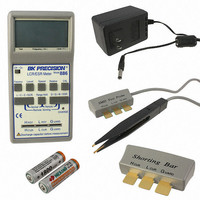866 B&K Precision, 866 Datasheet - Page 116
Specifications of 866
Contents
Programmer, Adapter, Cable, Manual and Software
For Use With/related Products
EPROM, EEPROM-Flash, Serial EPROM, Microcontroller & PLD
Other names
866BK
Q2005647
Q2005647
Available stocks
Company
Part Number
Manufacturer
Quantity
Price
Part Number:
866590-0950
Manufacturer:
TOSHIBA/东芝
Quantity:
20 000
Company:
Part Number:
8669-001
Manufacturer:
TOSHIBA
Quantity:
6 222
Device / Device options
Device / Device options / Operation options
determines pins number automatically. For other programmers
you must enter this number manually.
on the socket. This is necessary to enable the system to read
the device ID. Do not insert into the socket a device that is not
an EPROM or Flash. It may be damaged when the programmer
applies the high voltage.
EPROM types, because most of them ID not supports.
The commonly used term are also explained in the user's
manual to programmer. The special terms used here are
exactly the terms used by manufacturer of respective chip.
Please read the documentation to the chip you want to program
for explanation of all used terms.
The programmer applies a high voltage to the appropriate pins
We don't recommend apply this command to 2764 and 27128
All settings of this menu are used for programming process,
serialization and associated file control.
All settings of this command are used for programming
process control. This is a flexible environment which content
items associated with current device and programmer type.
Items, which are valid for the current device but aren't
supported by current programmer, are disabled. These settings
are saving to disk along with associated device by File / Exit
and save command.
List of commonly used items:
group Addresses:
device start address (default 0)
device end address
buffer start address
Split
This option allows setting special mode of buffer when
programming or reading device. Using split options is
particularly useful when using 8-bit data memory devices
in 16-bit or 32-bit applications.
Following table describes buffer to device and device to
buffer data transfer
Split type Device
None
Even
Odd
1./4
Device[ADDR]
Device[ADDR]
Device[ADDR]
Device[ADDR]
(default device size-1)
(default 0)
(default none)
116
assignment
Buffer[ADDR]
Buffer[2*ADDR]
Buffer Address
Buffer[1+(2*ADDR)]
Buffer[4*ADDR]
























